The use of potentially harmful chemicals in conveyor belts
Most of the rubber used to make modern-day conveyor belts is totally synthetic or only contains a relatively small amount of natural rubber. In basic scientific terms, the creation of rubber compounds (rubber compounding) is the process where a range of ‘specific task’ chemicals, reinforcements, resins and a variety of other substances are mixed together with rubber polymers.
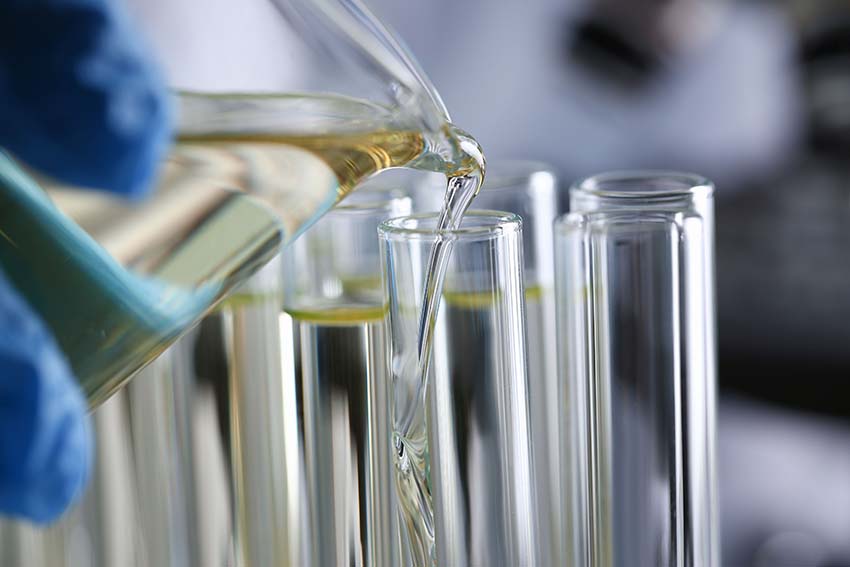
The most common polymers used in conveyor belts are Styrene- Butadiene rubber (SBR) and Nitrile rubber (NBR). The chemical agents form chains of polymers to create rubber compounds that will ultimately be vulcanised to create the finished product.
There are literally dozens of different components that are used to create the various rubber compounds, such as anti-degradants, anti-ozonants and also as accelerators (essential for the vulcanization process for example). These components include primary amine–based sulfenamides, such as N-cyclohexyl-2-benzothiazole sulfenamide, and thiazoles, such as 2-mercaptobenzothiazole. Unfortunately, it is an inescapable fact that to make some conveyor belt rubber compounds it is necessary to use chemicals that are extremely harmful if not used in a tightly controlled and responsible way.
What are the concerns?
The reason why the levels of hazardous chemicals are such a cause for concern is twofold. Firstly, there are the already proven harmful effects that ‘substances of very high concern’ (SVHC’s) can have on humans and the environment including, of course, wildlife. This includes categories 1 and 2A carcinogenic classifications*. Secondly, and equally importantly, there is an ever-growing list of substances still under research that are suspected by scientists to have potential harmful effects. Sadly, history is littered with examples of substances (asbestos for example) that were thought to be harmless at the time but ultimately proved to have seriously damaging long-term effects.
(* Definition: Group 1: “Carcinogenic to humans” There is enough evidence to conclude that it can cause cancer in humans. Group 2A: “Probably carcinogenic to humans” There is strong evidence that it can cause cancer in humans, but at present it is not conclusive).
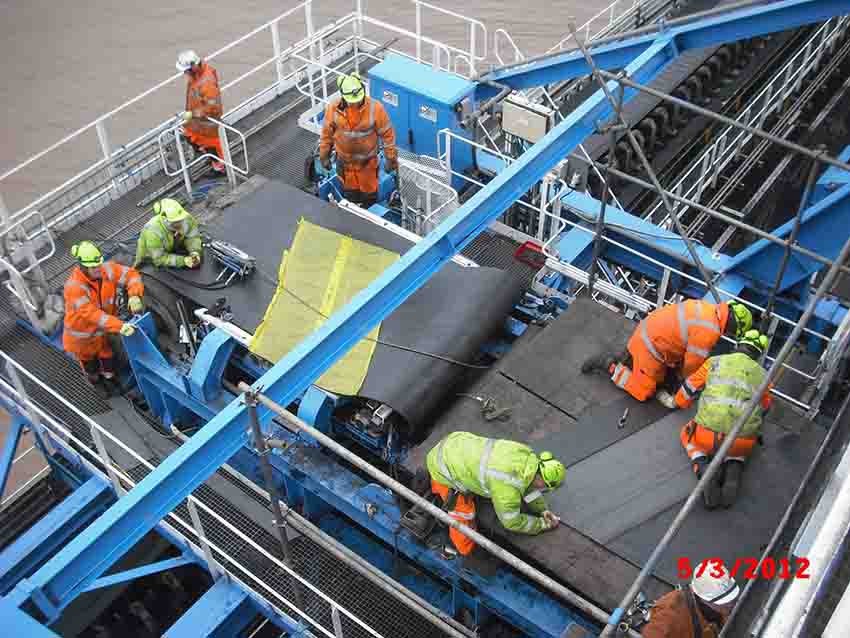
As far as conveyor belts are concerned, those who regularly work with them as part of their job role, such as conveyor maintenance staff and belt splicers for example, are potentially at greatest risk. Such risks are also shared with wildlife and the environment, so all need to be safeguarded. Even at the end of their life, the rubber on conveyor belts is often removed, granulated and re-used on recreational surfaces that are used by children, adults and animals. The hazards can therefore be long-term and even more serious.
Something smells wrong
One of the biggest concerns involves short-chain chlorinated paraffin’s (SCCP’s). These are commonly used to accelerate the vulcanizing process. REACH regulations clearly stipulate that SCCP’s should either not be used at all or at least only used on a very restricted basis because of their category 2 carcinogenic classifications. Their presence can usually be identified by the unpleasant smell of the rubber whereas good quality rubber usually has very little smell at all.
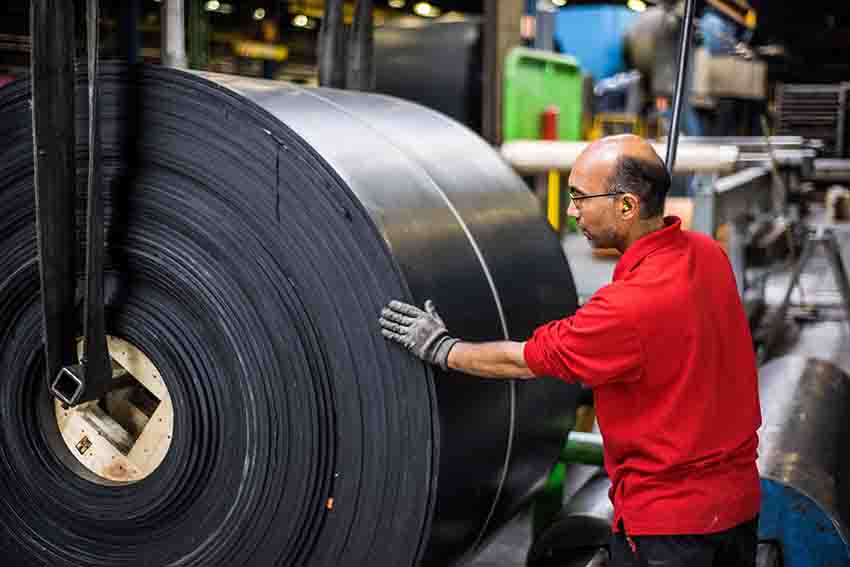
The formation of nitrosamines gasses is yet another cause of concern. These occur when certain types of vulcanisation accelerators are used. Nitrosamine gasses can release themselves from rubber belts, which could particularly be a problem when the belts are stored indoors. Nitrosamines are chemical compounds classified as probable human carcinogens on the basis of animal studies. Investigative research is still ongoing but publicly available information from the rubber industry (primarily from within Germany and The Netherlands) indicates that nitrosamine formation can be avoided if the accelerators are replaced by others that do not contain nitrosatable substances.
Fortunately, at least as far as Europe is concerned, very strong regulations are in place to protect humans and the environment in the form of REACH (Registration, Evaluation and Authorisation of Chemical substances) regulation EC 1907/2006, which places strict limits on the amounts and types of chemicals that can be used in each product. At the same time, REACH encourages safer substitutions and, in some cases, bans certain chemicals altogether. When REACH was first introduced it largely went unnoticed by the conveyor belt industry. However, thanks to 16-years of hindsight, there is now a greater understanding of the importance of such regulations and the enormous duty of care we owe to our families, work colleagues, customers and the environment.
What is REACH?
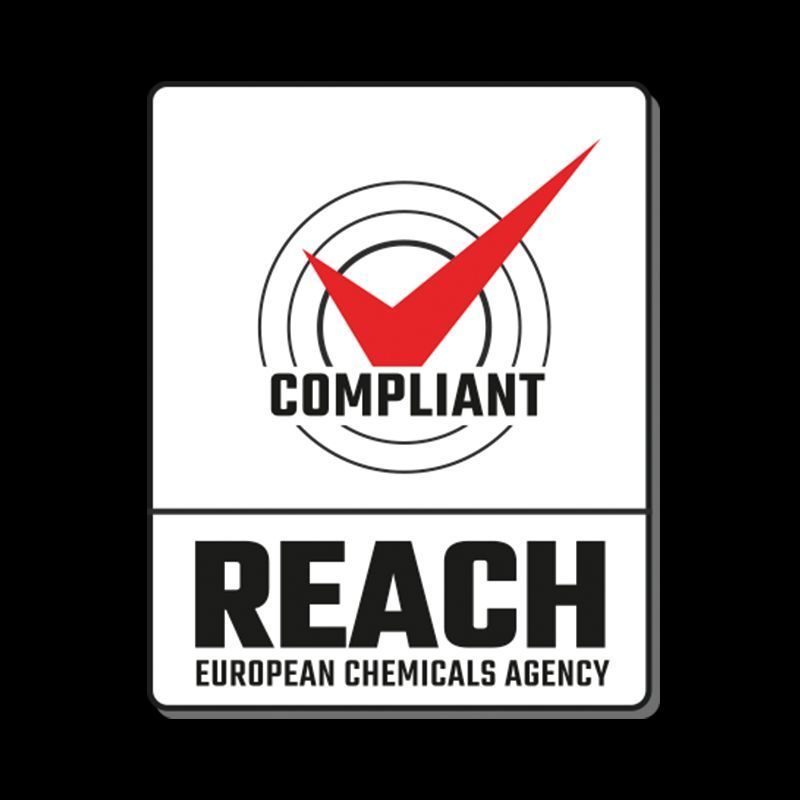
REACH was established by members of the EU and first came into force in June 2007. Its specific aim is to improve the protection of human health and the environment through the better and earlier identification of the intrinsic properties of chemical substances and their potentially harmful effects. This is achieved by four processes, namely registration, evaluation, authorisation and restriction.
REACH Regulation places direct responsibility on industry to manage the risks from chemicals and to provide safety information on the substances. Manufacturers and importers are required to gather information on the properties of their chemical substances, which will allow their safe handling, and to register the information in a central database in the European Chemicals Agency (ECHA) based in Helsinki. The Agency is the central point in the REACH system. It manages the databases necessary to operate the system, co-ordinates the in-depth evaluation of suspicious chemicals and build and maintain a public database in which consumers and professionals can find hazard information.
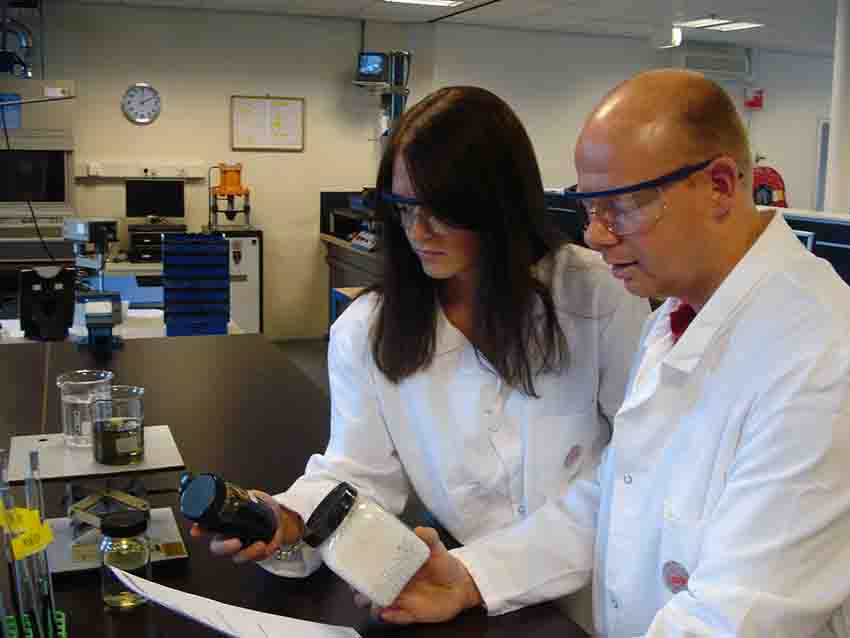
The Regulation also calls for the progressive substitution of the most dangerous chemicals when suitable alternatives have been identified. One of the primary reasons for needing stricter regulation was that as modern technology advanced at pace, new substances were regularly being developed and introduced into the market in Europe without sufficient research data or regulatory safety control. Most of these new substances lacked information on the potential hazards that they might pose to human health and the environment. One of the key objectives of REACH was therefore to fill these information gaps to ensure that industry is able to assess hazards and risks of the substances, and to identify and implement risk management measures to protect humans and the environment.
Accountability and responsibility
The conveyor belt market is hugely price-competitive, mainly because of imported belting from Southeast Asia. As a result, many European conveyor belt manufacturers have chosen to ignore REACH requirements, either completely or at least partially because of the negative impact on production costs. Manufacturers located outside of EU member states and the UK are not, of course, subject to REACH regulations and EU regulation concerning Persistent Organic Pollutants (POPs). Raw materials, all of which are readily available on the open market, make up some 70% of the cost of producing an industrial conveyor belt. Unsurprisingly, unregulated raw materials cost appreciably less than regulated materials, which creates a very significant selling price advantage for those outside of the regulations or those simply not willing to comply with them.
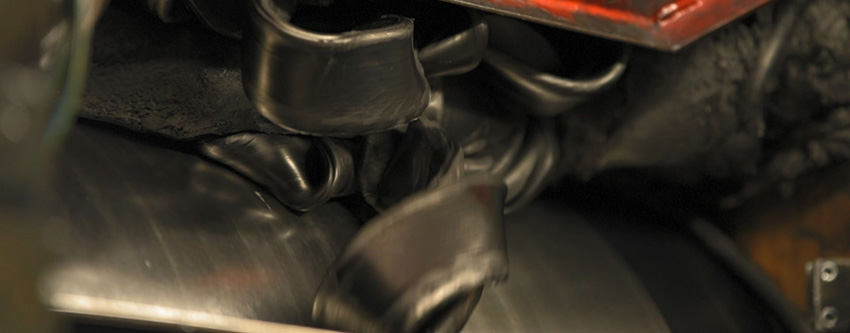
IMPORTERS BEWARE! Although it is still legally permissible to import belts that contain materials that are forbidden to be used in Europe, European-based companies who import belts from outside of Europe are responsible for REACH regulation compliance. This means that non-EU and UK manufacturers are free of responsibility and the possible consequences while the importers of their products, almost certainly unknowingly, are subject to them. It is not only traders and vulcanizing companies that are exposing themselves to risk. In order to compete in the ‘low price’ end of the market, many European manufacturers import rubber compounds and/or part of their product range from outside of Europe, so it is virtually impossible for them to know if they contain SVHC’s and Persistent Organic Pollutants (POP’s). One shining example of how to avoid this dilemma is Fenner Dunlop in the Netherlands who manufacture all of their belts (including the rubber) using entirely their own production facilities. Only in that way can they be sure that they comply fully with REACH and POP’s regulations. Sadly, they are a very rare exception.
Progressively tougher
Anything to do with science is a process of continual evolution. REACH regulations regarding substances of very high concern have continued to develop in line with ongoing scientific research. As a logical consequence, they have become increasingly stringent and demanding, which can only be a positive thing. Early compliance was largely based on declaring (registering) the use of listed chemical substances and staying within specific limits applicable to each substance. Now, Article 31 of REACH (requirements for safety datasheets) demands that if a product contains SVHC that is more than 0.1% of the gross weight of the finished product then the manufacturer is compelled to both register its use with the European Chemicals Agency (ECHA) and provide their customer with a safety datasheet.
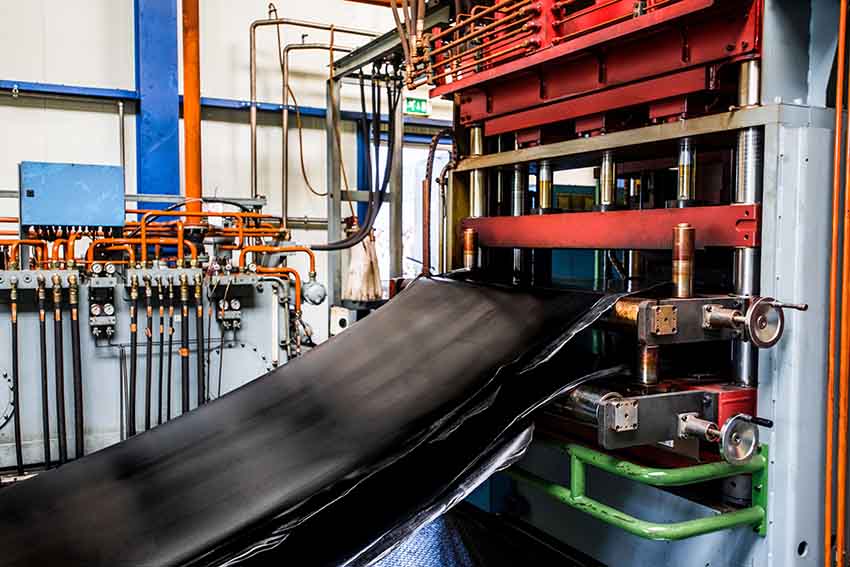
Accurately calculating the total proportion of weight relating to SVHC for an individual product is quite a painstaking task. However, there is no doubt that it is entirely necessary. European manufacturers that are REACH compliant must review and calculate the weight of SVHC in all of the materials that they use in each individual product, including raw materials they may buy from outside sources. What makes the process extra laborious is that not only do the proportions differ depending on the composition of each product type, they also differ depending on the thickness of the rubber covers.
A duty of care
Each and every one of us has a duty of care to our families, our colleagues, our customers and the environment. REACH compliance is therefore very important and should always be a part of the specification of every conveyor belt. Always demand written confirmation (certification) from the belt manufacturer or supplier that the product you are thinking of buying has been produced in compliance with REACH EC 1907/2006 regulations. A certificate of origin is also reassuring to have.
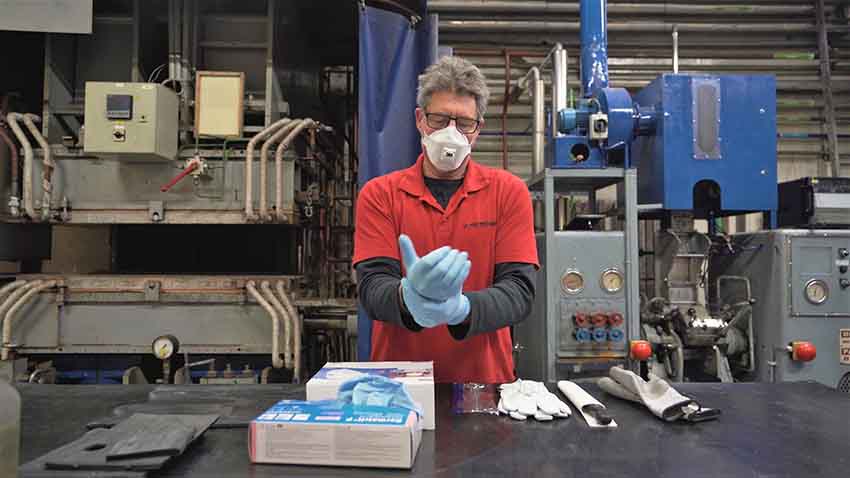
At the same time, basic safety precautions for those working with conveyor belts should be applied. Firstly, wear gloves (if practical) when handling belts. Secondly, always wash your hands before drinking, eating or smoking. Lastly, those involved in actions that may cause rubber dust to be produced, such as grinding for example, should always wear a mask to prevent inhalation of dust particles.
Bob Nelson

